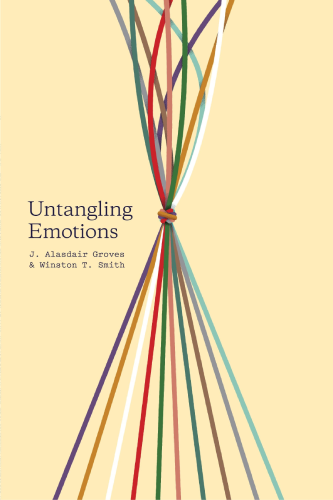Feelings and emotions. Two words that take us on a continuous rollercoaster ride. They take us up and down between ‘positive and negative’ emotions. When we finally get a breather, the ride begins again. The Bible teaches us that emotions are from God and are an indispensable part of what makes us human. So how do we navigate everyday moments that are filled with the complexity of our emotions?
1. What is the book about?
Untangling Emotions is a book that explores God’s good design for emotions and how they play a crucial role in our relationship with God and each other. As God’s created beings, having emotions is one of the ways that we bear His image. Not only that but God also sent Jesus as His true image-bearer and our ultimate role model for healthy emotions. Emotions flow out of what we love and it ultimately should point us to love the right things: God and others. The book has 3 main sections:
- The first section explores what emotions are biblically and what God designed them to do.
- The second section teaches us how to engage our emotions in a healthy manner. It provides a framework for responding to our emotions and bringing them before God and one another.
- The third section focuses on engaging emotions that are more difficult to confront, such as fear, anger, grief, guilt and shame.
2. What did I learn?
Most people tend to categorize their feelings into two groups: positive emotions (feelings associated with happiness and joy) and negative emotions (feelings that are unpleasant and don’t make us feel good). You’ve probably thought at some stage that these negative emotions shouldn’t exist. However, this book argues that maybe there is something right and important about feeling both negative and positive emotions.
God designed a world where humanity was intended to live in a perfect relationship with Him and others. Being image-bearers of God means that we should see the world how He sees it, love what He loves and hate what He hates. Unfortunately, the world we now live in is sinful and broken, and as such negative, unpleasant emotions exist. In fact, these negative emotions are a right response to and result of the presence of sin in our world. However, since we are imperfect people, this also means we don’t always respond with our emotions the way God intended. Nonetheless, there is hope for us as Christ is our perfect model that we can turn to as we navigate this difficult world.
3. What did I enjoy?
I greatly enjoyed Untangling Emotions and would highly recommend it since it’s very easy to follow and relate to. As someone who always seeks to understand how people think and relate to others emotionally, this book taught me how to view emotions in a biblical manner and how to better understand myself and others. The book also challenges the two approaches to emotions that our society follows; either emotions are everything and you need to do whatever it takes to make yourself feel good, or you are to suck it up and get over it. At the end of each chapter, Groves and Smith helpfully provide questions to give space for reflection on what you have read and how it has challenged your views on emotions.
4. Why should other people read it?
We live in an age where lives are busier and noisier than ever, resulting in a society that struggles to find time to reflect and slow down. If we can understand how God intends for us to relate to Him and others rightly through our emotions, then we just might save ourselves from many relational breakdowns.
I recommend going through this book together in a small group (3-4 people). I did this with a group and was encouraged by how we grew in friendship and an intimate understanding of one another. We were also able to challenge and help each other process how we deal with the more uncomfortable emotions. Emotions are an indispensable part of what makes us human and it is crucial to know how to use them to rightly relate to God and others.

